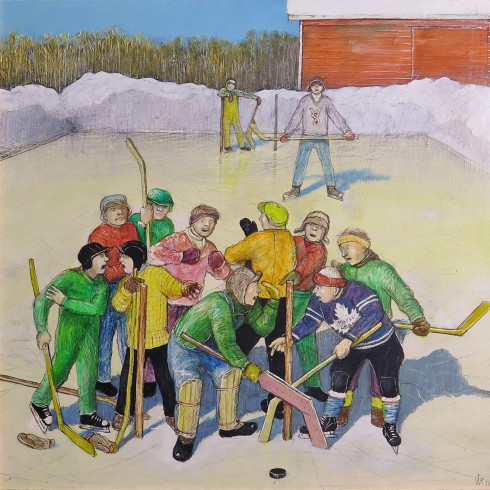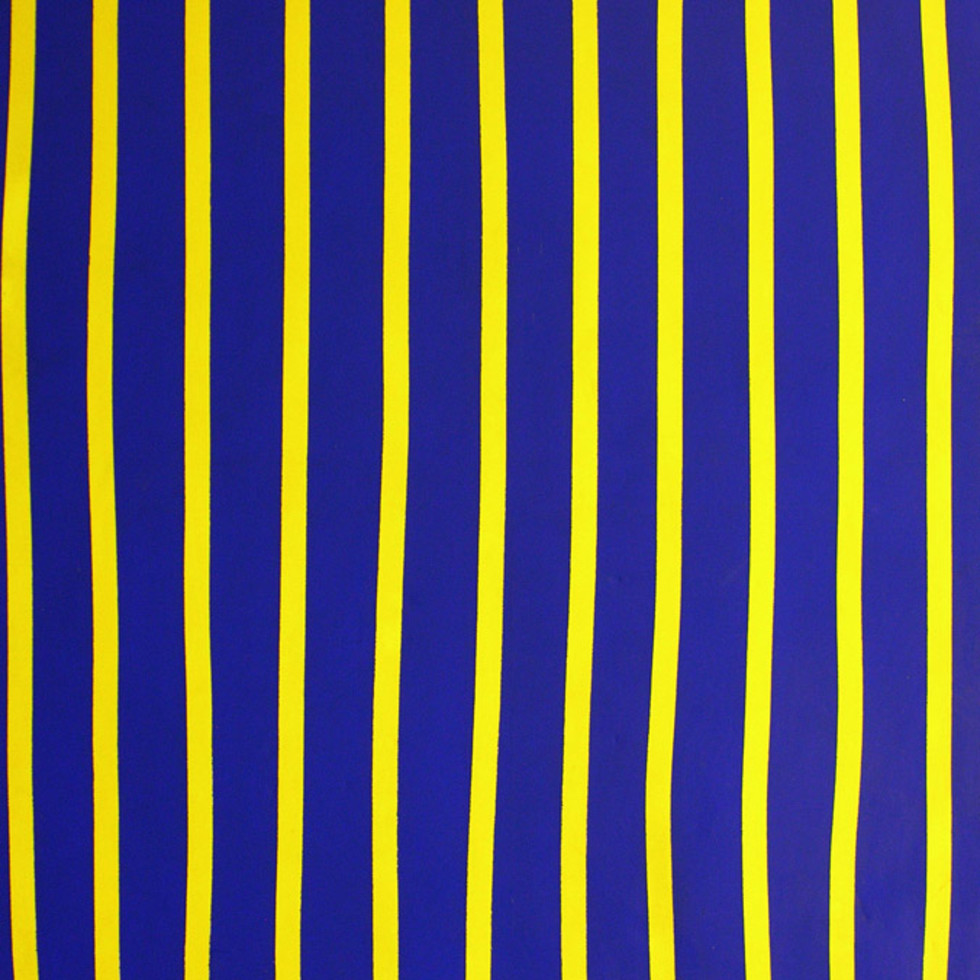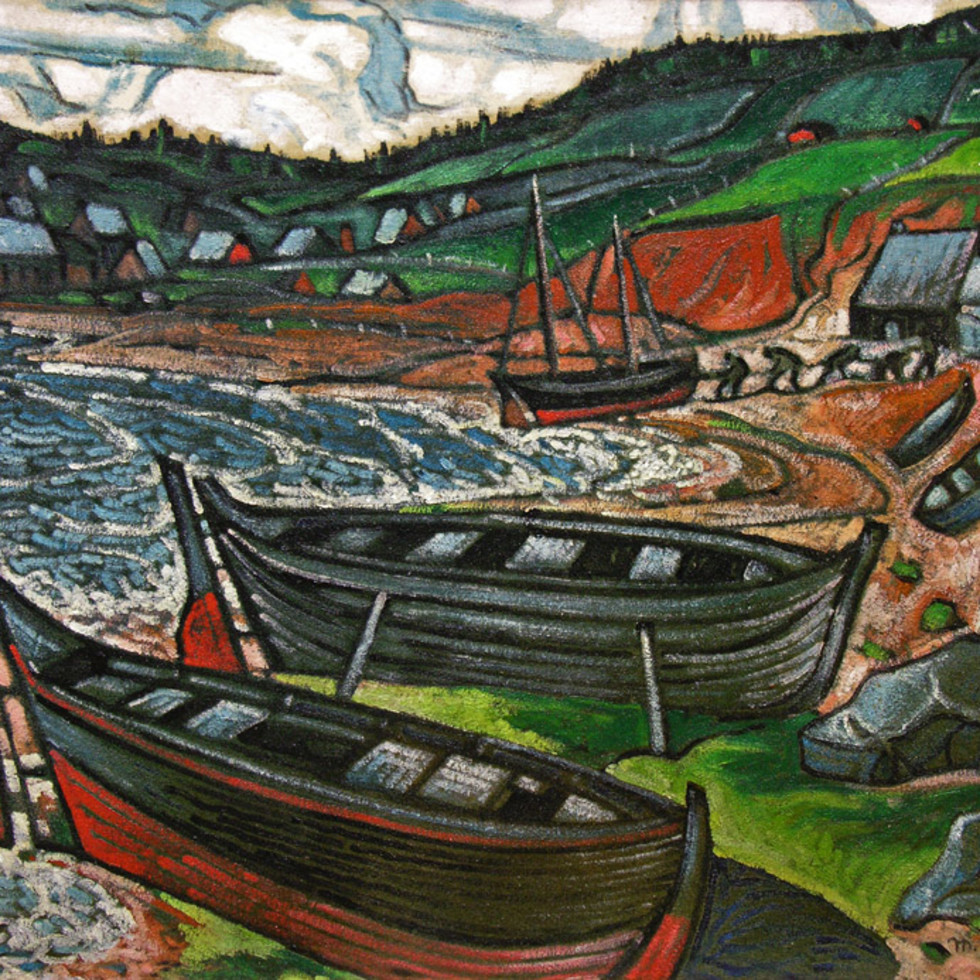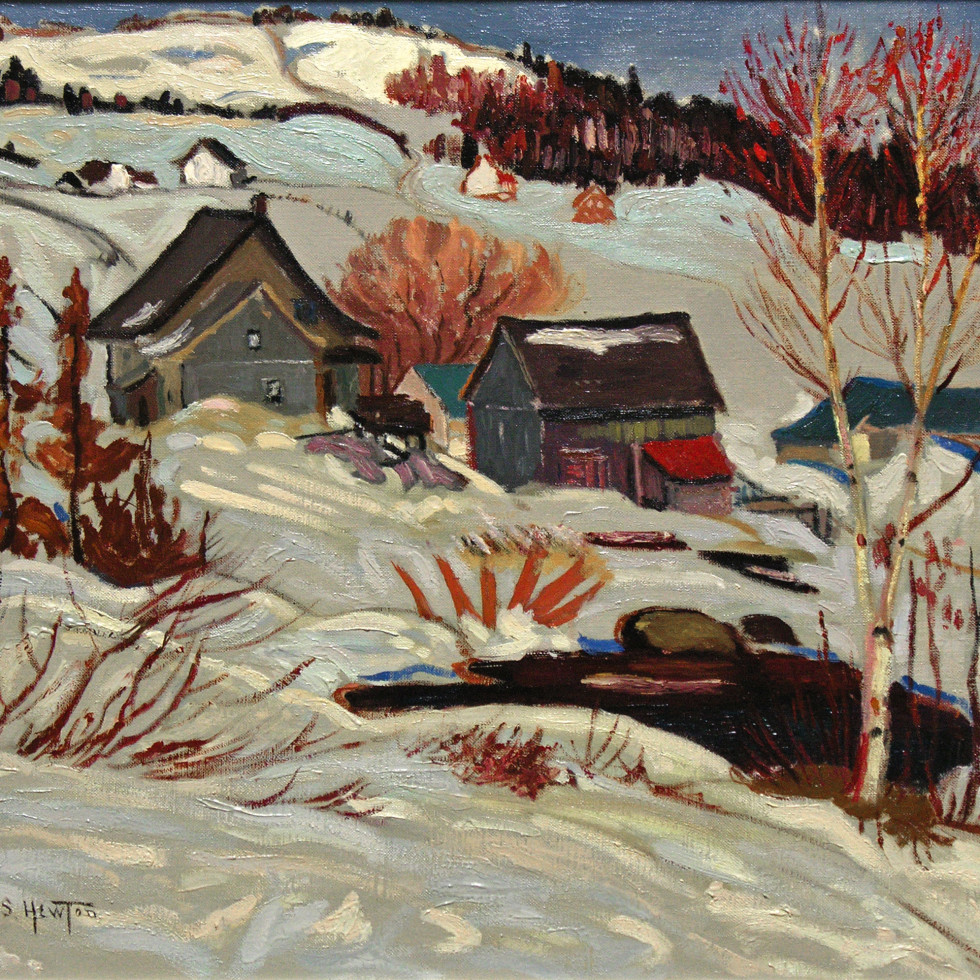Notable Sales
Miners Going to Work, 6:30am (Noranda), 1945 (January)
50.8 x 40.6 cm
This work is included in the Frederick B. Taylor Inventory of Alan Klinkhoff Gallery, no. 755
Inscriptions
signed and dated 'Taylor '45' (lower left); titled and dated, ‘MINERS GOING TO WORK NORANDA 1945’ (verso, stretcher)Provenance
Dominion Gallery, Montreal, no. G6862;
Acquired from the above by the present private collector, North Carolina, U.S.A.
While the aforementioned is accurate, in conversations with him, Taylor explained to me that at the very time of his painting it was his opinion that the contributions to the War effort by the Canadian workers were not adequately promoted. He sensed that his very activity painting the men and women at work in the factories created among those he was observing an immediate and greater pride in what they were doing. He showed the work and sometimes even auctioned them off in the worker’s lunch rooms, instilling a larger audience and increasing self esteem.
The Noranda miners painted here by Taylor mined a supply that was second only to INCO in the production of copper. The greatest part of the production was sent to Great Britain and that its usage was primarily in the "manufacturer of brass of generator and motor equipment, of degaussing cable used in the protection of ships from magnetic mines; of motor vehicle tubing; and of shell bands. The wartime controlled price of electrolytic copper (London price in Canadian funds) remained at 11.75 cents a pound throughout the year. The New York price of domestic electrolytic copper remained at 11.775 cents a pound in 1942, 1942, and 1944.” [2]
https://emrlibrary.gov.yk.ca/ebooks/canadian-mineral-industry/1944.pdf.
Alan Klinkhoff
—
Footnotes:
[1] Taylor, Frederick B. sketch drawing, Miners Working with bars at a Grizzly, Noranda Que. 1945, charcoal, Canadian War Museum, Ottawa, artifact 1024806.
[2] Reviews by the Staff of the Bureau of Mines. The Canadian Mineral Industry in 1944. Ottawa: Canada Department of Mines and Resources, 1945, p. 25, https://emrlibrary.gov.yk.ca/ebooks/canadian-mineral-industry/1944.pdf



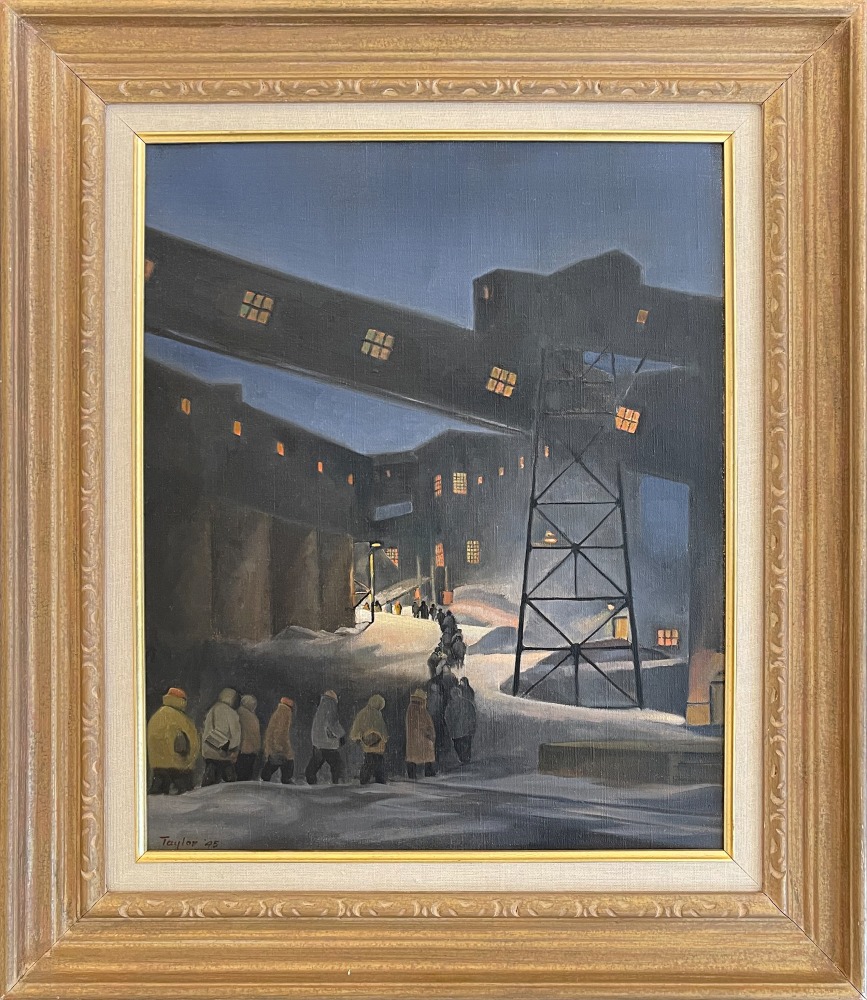

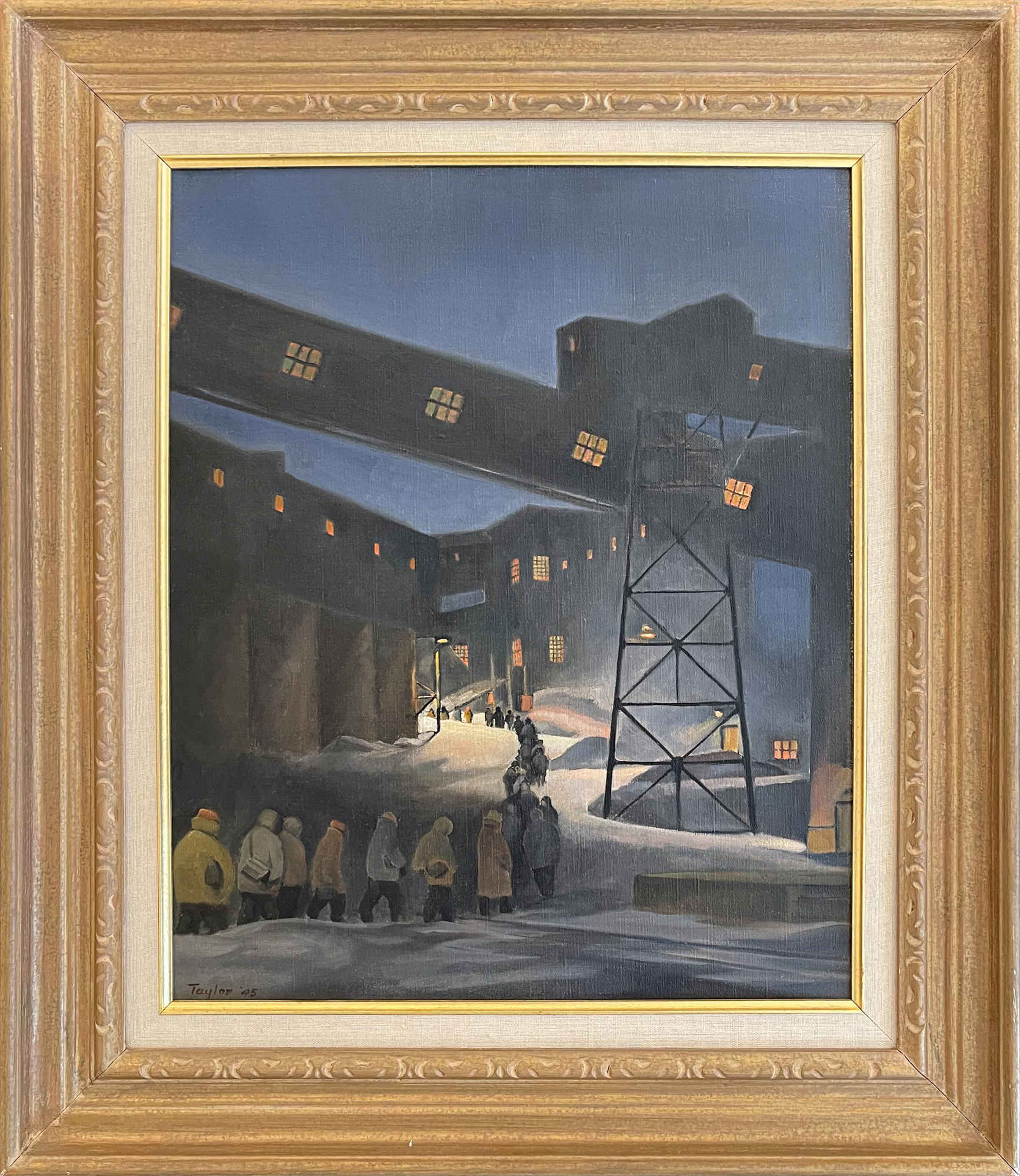












![Pouring Residue Bronze into the Chill Moulds [for bronze parts Anti Aircraft Guns] in the Brass Foundry, Dominion Engineering Works, Lachine, Quebec-Frederick B. Taylor](https://artlogic-res.cloudinary.com/w_980,h_980,c_fill,f_auto,fl_lossy/artlogicstorage/alanklinkhoff/images/view/22c8182f14847c1bca1e066d26d8e439j.jpg)
